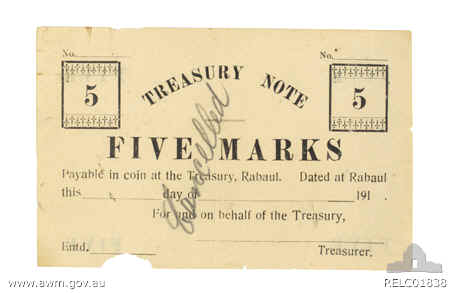New Guinean Mark on:
[Wikipedia]
[Google]
[Amazon]
 The Mark (
The Mark (
 In 1894, the Neu-Guinea Companie issued bronze 1, 2 and 10 Pfennig and silver ½, 1, 2 and 5 Mark coins, followed by gold 10 and 20 Mark pieces in 1895.
In 1894, the Neu-Guinea Companie issued bronze 1, 2 and 10 Pfennig and silver ½, 1, 2 and 5 Mark coins, followed by gold 10 and 20 Mark pieces in 1895.
 The Mark (
The Mark (German
German(s) may refer to:
* Germany (of or related to)
**Germania (historical use)
* Germans, citizens of Germany, people of German ancestry, or native speakers of the German language
** For citizens of Germany, see also German nationality law
**Ger ...
plural: Mark, English
English usually refers to:
* English language
* English people
English may also refer to:
Peoples, culture, and language
* ''English'', an adjective for something of, from, or related to England
** English national ide ...
plural: marks) was the currency of the colony
In modern parlance, a colony is a territory subject to a form of foreign rule. Though dominated by the foreign colonizers, colonies remain separate from the administration of the original country of the colonizers, the ''metropole, metropolit ...
of German New Guinea
German New Guinea (german: Deutsch-Neu-Guinea) consisted of the northeastern part of the island of New Guinea and several nearby island groups and was the first part of the German colonial empire. The mainland part of the territory, called , ...
between 1884 and 1911. It was equal to the German Mark
The Deutsche Mark (; English: ''German mark''), abbreviated "DM" or "D-Mark" (), was the official currency of West Germany from 1948 until 1990 and later the unified Germany from 1990 until the adoption of the euro in 2002. In English, it was ...
, which was also legal tender in the colony.
Initially, only German currency circulated. This was supplemented in 1894 by coins issued specifically for New Guinea. These coins were demonetized on 15 April 1911, in exchange for the German Mark, the only legal tender after that date.
In 1914, during World War I
World War I (28 July 1914 11 November 1918), often abbreviated as WWI, was one of the deadliest global conflicts in history. Belligerents included much of Europe, the Russian Empire, the United States, and the Ottoman Empire, with fightin ...
, German New Guinea was quickly occupied by Australia
Australia, officially the Commonwealth of Australia, is a Sovereign state, sovereign country comprising the mainland of the Australia (continent), Australian continent, the island of Tasmania, and numerous List of islands of Australia, sma ...
. That year, the Australian authorities issued Treasury notes denominated in marks. In 1915, the Mark was replaced by the Australian pound
The pound ( Sign: £, £A for distinction) was the currency of Australia from 1910 until 14 February 1966, when it was replaced by the Australian dollar. As with other £sd currencies, it was subdivided into 20 shillings (denoted by the symbol ...
.
Coins
 In 1894, the Neu-Guinea Companie issued bronze 1, 2 and 10 Pfennig and silver ½, 1, 2 and 5 Mark coins, followed by gold 10 and 20 Mark pieces in 1895.
In 1894, the Neu-Guinea Companie issued bronze 1, 2 and 10 Pfennig and silver ½, 1, 2 and 5 Mark coins, followed by gold 10 and 20 Mark pieces in 1895.
Banknotes
Between 1914 and 1915, TreasuryBanknotes of New Guinea Banknotes were issued in New Guinea in late 1914 after Australian forces took over German New Guinea.
These extremely rare notes are denominated in New Guinean marks, as opposed to German New Guinean marks. The New Guinean mark was created as a w ...
were issued for 5, 10, 20, 50 and 100 marks. All are extremely rare today.
References
* * Modern obsolete currencies German New Guinea Currencies of Germany Currencies of Papua New Guinea 1884 establishments in German New Guinea 1915 disestablishments {{PapuaNewGuinea-stub